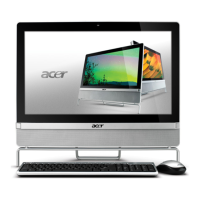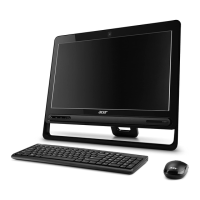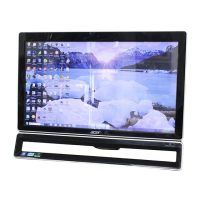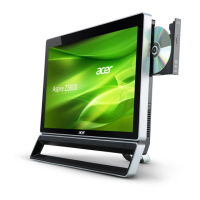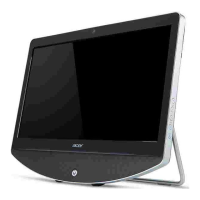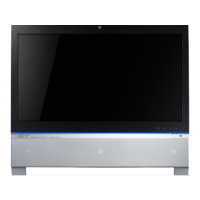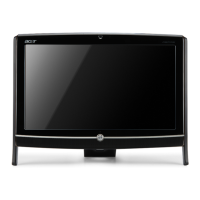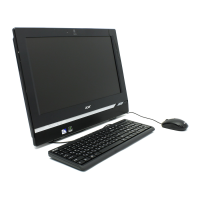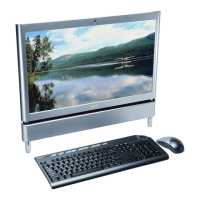Do you have a question about the Acer Aspire Z3170 and is the answer not in the manual?
Lists general features of the system.
Provides a summary of key system specifications.
Details about the computer's physical casing and its components.
Information on the main circuit board and its components.
Identifies major components and ports of the system.
Shows the layout and placement of components on the motherboard.
Explains how to configure jumpers on the motherboard.
Visual representation of system component connections.
Program for configuring system hardware settings.
Steps to access the CMOS setup utility.
How to use the BIOS/CMOS setup interface.
Interface for system configuration and settings.
Procedure for updating BIOS from DOS.
Procedure for updating BIOS from Windows.
Procedure for updating BIOS from SHELL.
Utility for managing system's Direct Media Interface data.
Tool for managing LAN adapter EEPROM settings.
Tools required for system disassembly and assembly.
Steps to take before disassembling the system.
Step-by-step guide to taking the system apart.
Visual guide to the disassembly sequence.
Instructions on how to detach the system stand.
Guide to removing the back panel of the computer.
Steps to remove the Hard Disk Drive.
Steps to remove the Optical Disk Drive.
Instructions for removing the main system board.
Step-by-step guide for putting the system back together.
Visual guide to the assembly sequence.
Instructions for replacing the Liquid Crystal Display.
Guide to installing the bottom chassis component.
Instructions for reinstalling motherboard protective cover.
Guide to reinstalling the back panel of the computer.
Instructions on how to reattach the system stand.
Overview of troubleshooting procedures.
Steps for diagnosing hardware problems.
Methods for checking system functionality.
How to check power-related issues.
Visual checks of the system's exterior.
Visual checks of the system's interior components.
Interpreting audible error signals from the system.
Understanding POST checkpoints for system status.
Procedures to recover the BIOS from corruption.
Standard operating procedure for control board calibration.
Information on using debug cards for diagnostics.
Configuration settings for the converter board.
How to configure system settings using jumpers.
Detailed instructions for jumper configuration.
Visual breakdown of system components for identification.
List of parts and their part numbers for replacement.
| Graphics | Intel HD Graphics |
|---|---|
| Operating System | Windows 8.1 |
| RAM | 4 GB |
| Storage | 500 GB HDD |
| Display | 23-inch Full HD (1920 x 1080) |
| Connectivity | Wi-Fi, Ethernet |
| Ports | USB 3.0, USB 2.0, HDMI, VGA |
| Optical Drive | DVD Super Multi |
| Weight | 7 kg |

